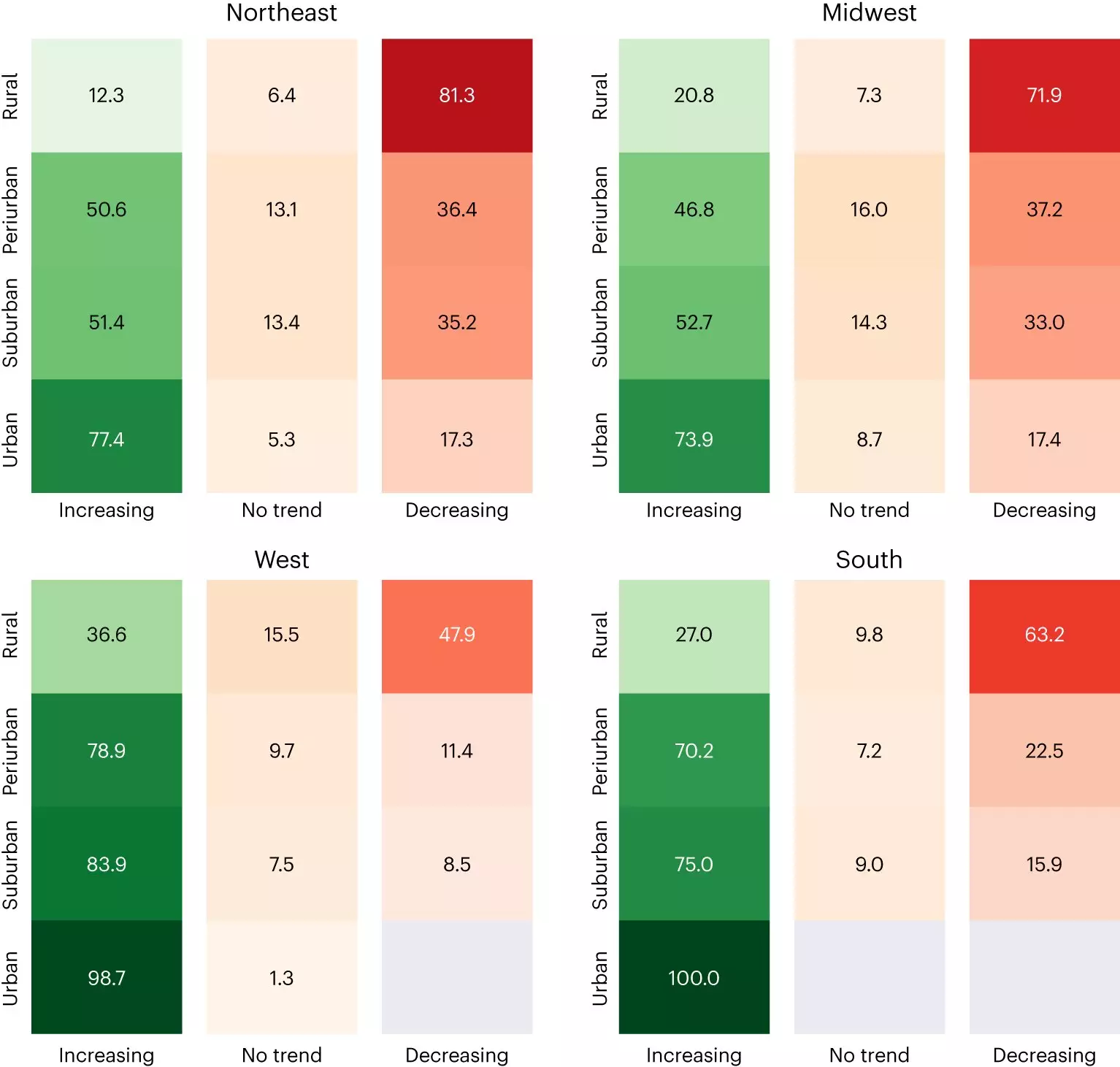Predicting the growth or decline of cities is a daunting task, considering the multitude of factors that come into play. Immigration rates, tax rates, home prices, birth rates, job availability, and the political climate all contribute to people’s decisions to stay or leave a city. Furthermore, the looming threat of global warming adds another layer of uncertainty to the equation, as some cities may become uninhabitable due to extreme heat, while others face the risk of being submerged in rising ocean waters.
To make this intricate task more manageable, a team of environmental engineers at the University of Illinois Chicago devised a novel approach. Uttara Sutradhar, Lauryn Spearing, and Sybil Derrible employed census data and climate models in their study published in Nature Cities. By analyzing recent and current population trends, they aimed to gain insights into the potential growth or decline of U.S. cities in the years leading up to 2100.
Utilizing publicly available data sources and results from climate models, the researchers examined population changes for 24,295 U.S. cities with consistent data from 2000 to 2020. They then expanded their analysis to encompass 31,568 cities using datasets from the Census Bureau’s 2020 TIGER/Line Shapefiles. Through comparing their findings with climate change estimates under various scenarios, the team made predictions about the future of U.S. cities.
Based on their models and estimations, the team discovered that approximately 50% of U.S. cities could experience population declines over the next 70 years. This represents an increase from the 43% of cities that witnessed population decreases as of 2020. Interestingly, the Midwest and Northeast regions are expected to be the most affected by these declines, although major cities like New York and Chicago are not included in this projection.
Conversely, the researchers anticipate growth in cities located in the south and the west, particularly in already-established urban areas like Phoenix and Houston. These cities not only have the advantage of a current growth trajectory but also possess favorable conditions for continued expansion.
The significance of these findings lies in their implications for city planners and policymakers. The researchers emphasize the necessity of having long lead times to adequately prepare for both population growth and decline scenarios. Rapidly growing cities may face challenges in terms of strained services and infrastructure, while shrinking cities could struggle to maintain necessary services with a dwindling tax base. By anticipating and understanding these potential changes, urban areas can better equip themselves to address the demands of their future populations.
Predicting the trajectory of population growth and decline in U.S. cities is a complex endeavor. However, through a meticulous analysis of past and current population trends, coupled with climate change estimates, researchers have shed light on the potential future of urban areas. By recognizing the diverse factors at play and the regional disparities in population changes, city planners and policymakers can proactively prepare for the challenges and opportunities that lie ahead.


Leave a Reply